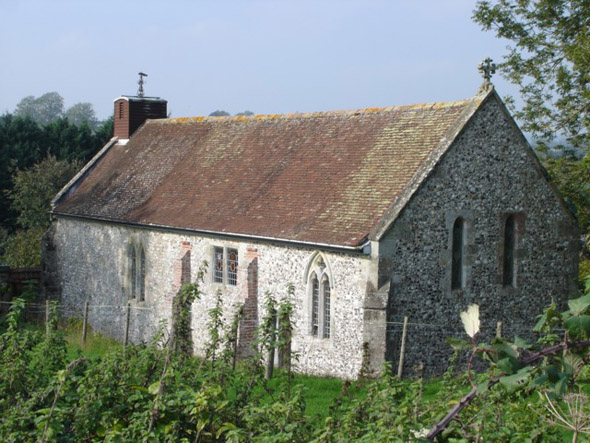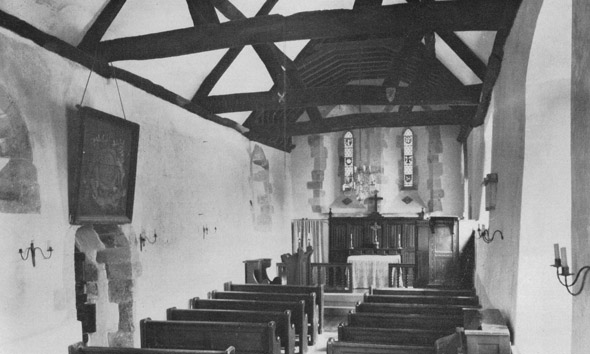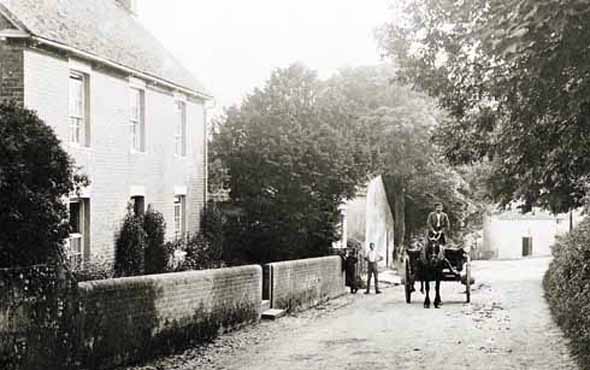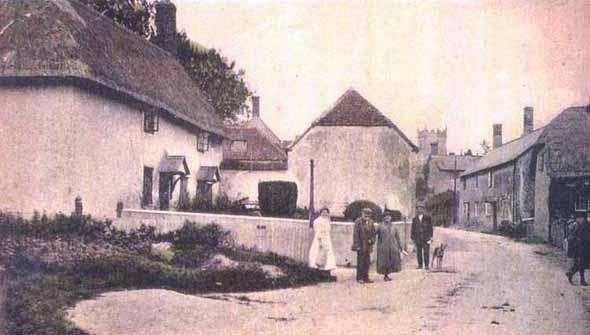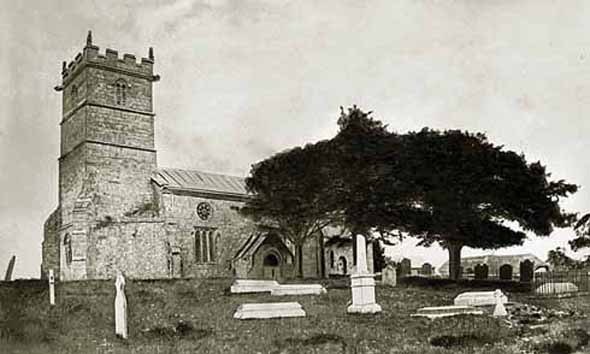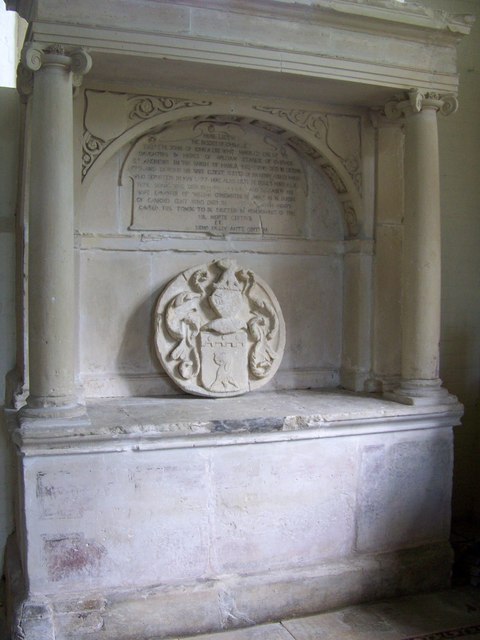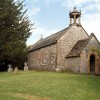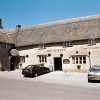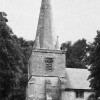Sixpenny Handley
Gussage St. Andrew in the Parish of Sixpenny Handley
The small and interesting church of Gussage St. Andrew sits in a field behind Chapel Farm in the parish of Sixpenny Handley. Nowadays it is a chapelry of the Parish Church of St. Mary’s but in Hutchins time it belonged to the parish of Gussage St. Michael about two miles away and has also been a Chapel of Ease to the church at Iwerne Minster.
The walls are of flint with ashlar dressings and in part have been rendered; the roof is tiled. St. Andrew’s comprises just a nave, chancel and a small bell-turret. The nave dates from the 12th century and the chancel from the late 13th century.
The gabled east wall of the chancel has two restored 13th century lancet windows and at the other end of the cell in the west wall there is a 12th century window. The nave has windows from the 12th, 13th, and 17th century as well as one probably installed in 1857 when a little restoration work was carried out. The church is entered through a 14th century doorway in the north wall of the nave.The Purbeck stone font dates from the 12th century and there is a late 17th century oak pulpit. The Royal Arms of George III are displayed but have been crudely painted.
There are two floor slab memorials: one in the chancel to William Williams who passed away on the 17th November 1725 aged 100 years, the other is in the nave and commemorates John Lush and his wife Mary, dated 1722.
By far the most interesting things about this little church are the wall paintings that were only uncovered in 1951. They depict the Betrayal of Christ and the Scourging, the Crucifixion, the Deposition and also the Suicide of Judas.
We have included in the gallery photos of the exterior and interior of St. Andrews.
Sixpenny Handley – the Fire of 1892
Four miles from the border with Wiltshire in the north east of the county is the curiously named village of Sixpenny Handley. It is probably the largest village in Cranborne Chase and sometimes signposted “6d Handley”, a reference to a pre-decimalisation coin. In his book Highways and Byways in Dorset Frederick Treves bestows on the village the accolade: “.the ugliest village in Dorset.”
During the spring of 1892 there had been remarkably little rain; the thatch roofing on the cottages was very dry. As the 20th of May dawned people awoke and set about their labours. The village blacksmith and wheelwright was busy bonding wheels, a process that required the rim to be heated to a very high temperature before being lifted and secured on the wheel.
Just before noon it seems a spark, or piece of burning material, was caught-up by the wind and carried some 150 yards from the smithy, alighting on the thatched roof of a cottage and setting it alight. Before it was noticed, sparks and embers had been lifted by the wind and carried along and across the main street; it was not long before the greater part of the village was ablaze, including the oil and tallow store.
Residents grabbed all the possessions they could and took them out of reach of the inferno but later, as the fire spread and there was much commotion and confusion, the flames greedily swallowed up even these meagre possessions. By the time the residents realised the scale of the battle they had on their hands the fire was unstoppable.
It was noon. Most of the men and lads were at work in the fields, this being a mainly agricultural community. The village is not near a river and had no direct water supply from any source above ground. It proved an impossible struggle, as even the wood framed wells surrendered to the intense heat. Some villagers put ladders to the walls of their homes and attempted to remove the burning thatch, but were defeated when the wooden ladders caught fire.
The inability of the villagers to get control of the fire in the early stages allowed it to rage fiercely and defy all attempts to halt the destruction it was determined to wreak; it burnt for three days. There was little left of the village after over 50 buildings were gutted, leaving 186 people homeless and destitute with little more than the clothes they stood up in. This was the third fire to break out in the village in 35 years and by far the most devastating.
The cost of rebuilding the village was expensive and a daunting task. Other communities rallied around with donations of money and clothes. The government sent bell tents and the army soldiers to put them up. Local farmers sent shepherds’ huts to house victims.
Treves was writing about the village a decade after the fire, when rebuilding would have been largely completed. We know the work had to be done quickly; it was not to the highest standard and this is clearly reflected in Treves scathing review of this unfortunate village.
There are photos of the village and the fire damage in the photo section.
(See our story Sixpenny Handley published 26th of November 2012 in the Sixpenny Handley category.)
.
